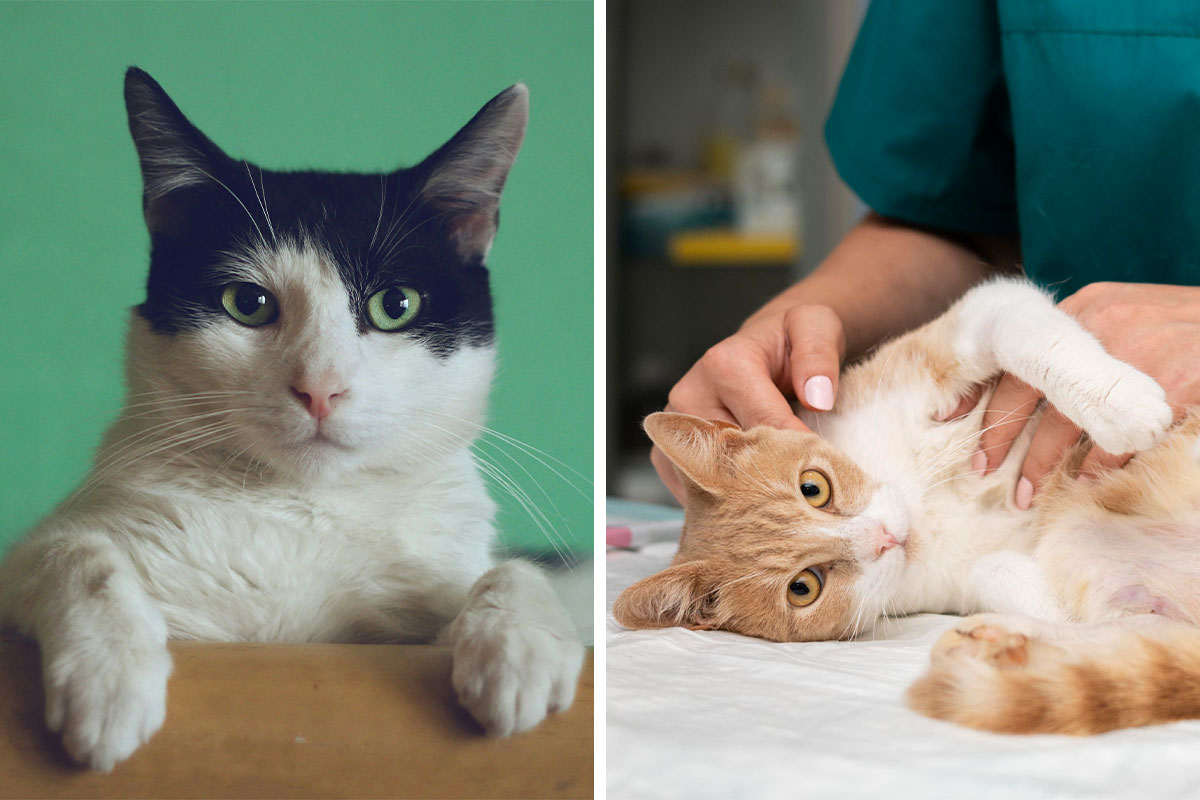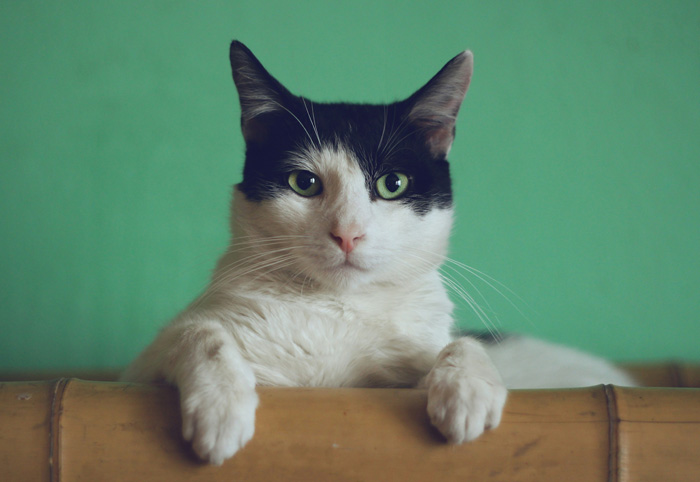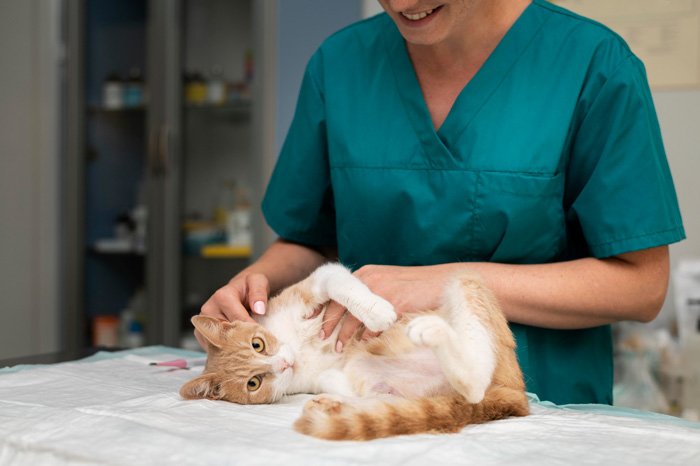As a cat owner, it is essential to understand your feline friend’s peeing habits and the factors that can affect them. Typically, a healthy adult cat should urinate at least once a day.
However, it is not uncommon for cats to urinate multiple times a day, especially if they have a high-moisture diet. If your cat has not urinated in 24-48 hours, it could be a sign of a urinary blockage or another serious medical condition. This situation raises the question of how long a cat can go without peeing safely.
- Factors affecting a cat’s ability to urinate include dehydration, urinary tract infections, bladder stones, and urinary blockages. Male cats, mainly, are prone to urinary blockages due to their narrow urethra.
- To help prevent peeing issues in your cat, providing them with a balanced diet that includes plenty of moisture and access to fresh water at all times is important.
- Regular veterinary check-ups, maintaining a clean litter box, and monitoring your feline friend’s peeing habits are also important for their overall health and well-being.
While every cat’s peeing habits may vary slightly, it is essential to be aware of any changes in your kitty’s urination patterns and seek veterinary care if you suspect they are having trouble urinating. With proper care and attention, you can help ensure that your cat maintains a healthy urinary system and overall well-being.
The information provided herein is for informational purposes only. Please refer to our disclaimer for more details..
- How long can a cat hold its pee?
- Is it safe to allow a cat to go without peeing for an extended period?
- Preventive measures to ensure a cat’s urinary health
- When to be concerned about changes in a cat’s urination frequency
- What are the signs and causes of urinary issues in cats?
- Behavioral indicators of potential urinary problems in cats
- When to seek veterinary assistance for a cat’s urinary concerns
- How to encourage a cat to urinate
How long can a cat hold its pee?
Feline peeing patterns can vary, and the ability of a cat to hold its urine is influenced by several factors.
- A healthy adult cat can typically hold their pee for 24 to 48 hours, but this can vary based on individual differences and health conditions.
- The bladder and urethra of a cat may affect how long they can go without peeing. For instance, if a cat has bladder inflammation or urinary tract obstructions, they may struggle to hold their urine for extended periods. Sometimes, this can be dangerous.
As a cat owner, it’s important to be mindful of signs that indicate your cat needs to urinate. If your cat is frequently visiting the litter box but not producing urine or if they are exhibiting signs of discomfort or restlessness, it could signal a peeing issue that requires immediate attention from a veterinarian.
Is it safe to allow a cat to go without peeing for an extended period?
While cats can hold their pee for a relatively long duration, it is not advisable to intentionally restrict their access to a litter box or prevent them from urinating. Pee retention in cats can pose significant risks to their health and well-being.
- If a cat cannot urinate for a prolonged period, it can lead to bladder distension, discomfort, and potential organ damage.
- If you are traveling or leaving your home for an extended time, make sure to check your house thoroughly to ensure that your cat does not get stuck in a room away from their litter box, striking fear and causing them to retain their urine.
- Certain urinary tract diseases, such as FLUTD (Feline Lower Urinary Tract Disease), can disrupt a kitty’s urination patterns and cause them to stop peeing altogether; thus, it’s important to monitor how much your cat urinates. It’s crucial for cat owners to be vigilant and proactive in ensuring their unique feline’s urinary health to prevent such complications.
Cleaning your cat’s litter box daily or frequently can be useful for assessing its urine output.
Preventive measures to ensure a cat’s urinary health
Providing access to clean and ample water is essential to promote optimal urinary health in cats. Encouraging regular hydration can help prevent urinary issues and reduce the risk of bladder inflammation.
Generally, cats are known to be particular regarding their everyday habits. Some cats may prefer a free-flowing water source from a faucet, ensuring they drink enough water, while others are content with a simple water bowl. Today, plenty of different types of watering sources can cater to your feline’s preference.
Maintaining a suitable environment and providing multiple litter boxes for a multi-cat household can alleviate stress and promote regular urination and poop habits. If you have a multi-level home, it can also be in your best interest to have access to a litter box on each level of the home.
It’s important to note that a healthy adult cat typically urinates multiple times a day on average. Monitoring your kitty’s urination habits can provide valuable insights into their urinary health. If you notice any significant changes in your feline’s urination frequency or if they are struggling to urinate, it’s important to seek veterinary advice promptly.
When to be concerned about changes in a cat’s urination frequency
If your cat is urinating more frequently than usual or has difficulty urinating, it could indicate underlying urinary issues. Sometimes, if a cat is in pain while urinating, they will let out an audible cry, which alerts their owner that something is wrong.
Additionally, if you observe blood in your feline’s urine or if they display signs of discomfort during urination, it’s crucial to consult a veterinarian to rule out any potential health concerns.
What are the signs and causes of urinary issues in cats?
Understanding the common symptoms and behavioral indicators of urinary issues in cats is crucial for proactively managing their health. Surprisingly enough, stress can play a huge role in peeing issues in cats.
- Stress can be emotional, physical, environmental, or disease-related. Cats struggling with urinary issues may often hide, pee outside the litter box, cry out, or become listless. If you notice any of these symptoms in your cat, it is important to seek veterinary care immediately.
- Several diseases and disorders can affect a cat’s urinary system, including kidney disease, FLUTD, and urethral blockages. These conditions can impact a feline’s ability to urinate normally and may result in serious health complications if left untreated.
- A block urinary tract, typically occurring in male cats due to the structure of their urinary system, is considered a true emergency. Your vet may recommend a series of tests to diagnose the specific issue and create a treatment plan. This may include dietary changes, medication, and, in severe cases, surgical intervention.
Preventing peeing issues in cats involves providing a diet that promotes urine health, ensuring they have access to clean water at all times, and keeping their litter box clean. Providing regular veterinary check-ups can also help identify any issues before they become serious, ensuring your feline friend remains healthy.
Behavioral indicators of potential urinary problems in cats
Cats experiencing urinary discomfort or issues may exhibit behaviors such as frequent visits to the litter box without producing urine, vocalization or agitation during urination, and aversion to using the litter box. These signs warrant immediate attention and evaluation by a veterinarian.
Pay attention to your feline’s behavior and seek assistance from a veterinarian if you notice any changes. Peeing issues can be very uncomfortable and even life-threatening for a cat, so prompt treatment and ensuring they drink enough water are crucial to their well-being.
When to seek veterinary assistance for a cat’s urinary concerns
If you suspect that your cat is experiencing problems with peeing, it is important to consult a veterinarian promptly. Diagnostic tests and a thorough examination can help identify the underlying cause of the urinary issues and ensure appropriate treatment and management.
A cat with a urinary block and a cat with an infection can present very differently. Educating yourself on how to palpate your cat’s bladder is highly beneficial to determine if an emergency vet visit is warranted.
Upon palpation of the lower abdomen, a healthy feline’s bladder should feel like a slippery water balloon. If it feels firm or rigid, it is best practice to get into an emergency veterinarian immediately, especially if you’re unsure when your cat last urinated.
The big worry is for the bladder to rupture due to a blocked urinary tract, preventing the urine from being released and causing the bladder to fill beyond capacity.
Pee retention in cats can be life-threatening, as the buildup of toxins in the body can lead to kidney damage and even death. If your cat is straining to urinate, vocalizing while in the litter box, or showing signs of discomfort or distress, it is crucial to seek veterinary care immediately.
How to encourage a cat to urinate
Creating an optimal environment for a cat to urinate is essential for their urinary health. Providing a clean and comfortable litter box in a quiet and accessible location can promote regular urination.
Additionally, implementing strategies to address litter box aversion and environmental stress can encourage a cat to urinate when needed.
If your cat hesitates to use the litter box, consider using different types of litter, it may help in determining the best option for your cat, encouraging regular urination and poop habits. Or provide multiple litter boxes in various locations to accommodate their preferences. Ensuring a stress-free and enriching environment for your cat can positively influence their urination habits and overall well-being.
698views
Share on Facebook
 Dark Mode
Dark Mode 

 No fees, cancel anytime
No fees, cancel anytime 




 Image credits:
Image credits:  Image credits:
Image credits: 
























5
0